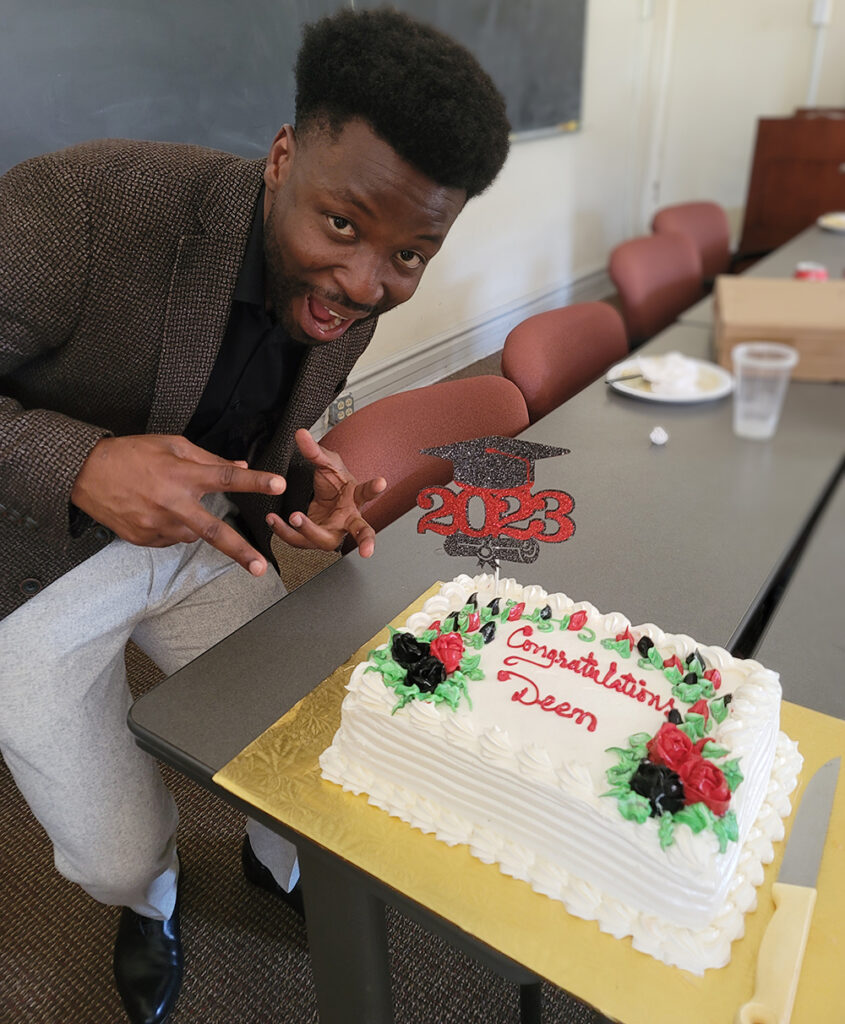We are really happy to announce that Tajudeen Mamadou Yacoubou passed his dissertation defense on July 28, 2023.
Title: Tone and Intonation Modelling in African Tone Languages
Abstract:
This dissertation puts forth a unified model of tone and intonation representation, called the SubTonally Reductive and Additive Model (STReAM), which uses autosegmental representations formulated as graphs (Goldsmith 1976; Coleman & Local 1991; Jard ine 2016). STReAM solves several outstanding issues in the representation of tone, including but not limited to (a) the Natural Class problem, i.e. the idea that there is a lack of motivation for natural classes along subtonal features, (b) the undergeneration/overgeneration problem, whereby existing subtonal feature systems predict either less or more than the maximum of five levels empirically attested in natural languages; and (c) the failure of previous models to capture the additive and subtractive effects of tonal processes (Hyman 2010; Clements 2010). STReAM uses two features + l and-1, and two types of geometrical structures, a simplex one which accommodates a single feature (i.e. +1 or -1) and a complex one with two features (i. e. + 1 | -1, +1 | +1, or -1 | -1), yielding a total of five levels of contrast. The signs of the features indicate the up ( + ) and down (-) movements of pitch relative to an abstract reference line or register (r) and the integer 1 is a unit of step, i.e. how much the pitch moved up or down. While convincing empirical arguments for (a) have been recently o ered (Meyase 2021; Akumbu 2019; McPherson 2017), all existing tonal feature models fail to account for four tone languages, where three out of the four tones form a natural class like in Fe’Fe’ Bamileke and Boko (Odden 1995). STReAM not only precisely captures the processes in these languages, but also specifically predicts the direction of pitch modification in the processes involved in these languages. As for issue (c), it is trivially addressed within STReAM since the features are additive when they have matching signs and cancel out when they have opposite signs. STReAM is thus a more descriptively adequate model of tonal representation than any such model previously proposed. As STReAM is extended to intonation (Chapter 3), register r is reintroduced in the representation of intonation since it is known to have global domain-wide e ects. Statistical analysis of novel intonational data in Ede Chaabe (Chapter 3 & 4) is used to provide empirical support for register as an intonational feature bound to prosodic domains. Register r forms, along with the tonal representation component steps, two of the five parameters of STReAM’s intonation model (presented as an a lgorithm), the other three being phonetic parameters for declination d, a speaker variability parameter alpha, and a meta parameter MCMD used to compute the other parameters. With this handful of parameters, the STReAM algorithm is able to predict the surface intonation of di erent types of utterances in a variety of tone languages with very high accuracy. STReAM further allows for the ability to tell if a language with four tones can accommodate structural intonation given how crowded its tonal space is. The quantitative data from the four tones language Baatonum (Chapter 4) establishes that a language with four tones can in fact have structural intonation, as predicted by STReAM, but unlike as conjectured in the literature (Connell 2017; Downing & Rialland 2018).
– – – – – –
🎉Congratulations, Dr. Deen! 🎉

